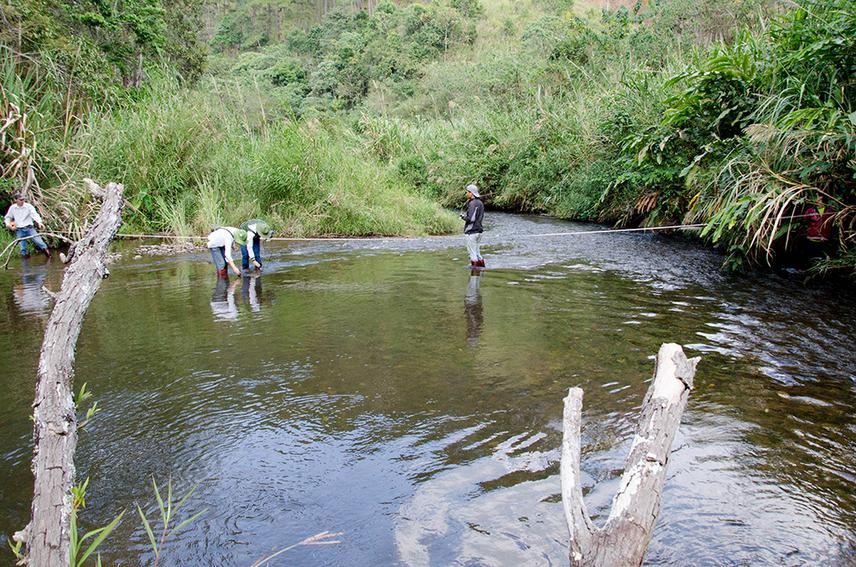Hung Manh Pham
The study investigates diversity of fishes in the Krong No River (a catchment of Mekong River system) for their conservation in this region.

Survey of fish habitat.
Freshwater ecosystems represent one of the most threatened broad habitat types globally” (Holland et al. 2012). Among Vietnamese ecoregion, the Kratie-Stung Treng presents a high level of endemism, and major conservation priorities for fish species (Abell et al. 2008, Holland et al. 2012). While several fish species of genera such as Tor, Onychostoma, Poropuntius, Garra harbor are only observed in the Krong No river (Mai et al. 1992, Nguyen 2001, Kottelat 2001 and 2011, Baird & Mean 2005), most of them are not identified to the species rank (Rainboth et al. 2012) and represents an important source of food for local human populations. In this context, limits of our knowledge for species inhabiting these regions represent a threat both for their conservation and sustainable exploitation. Taxonomical and biogeographical investigations are urgently needed to avoid collapse of this community.
To improve our knowledge on species present in the Krong No River, we propose to combine the morphology to the DNA barcoding approach to identify species, or flag putative new species. We have two objectives:
1. Provide the morphological and molecular characters useful for the identification of fish species
2. Provide a first species checklist useful for conservation management
This research wil provide habitat inventory with describe indigenous wild fish species and produce classification in the Krong No River. This will improve significantly the knowledge of conservation statuses of these fish species. In addition, the study also will supply sequences of mitochondrial genes Cyt b, COI, 16S rRNA of fishes that will help for identifying to species level exactly. The expected result will provide more information for researching on phylogeny and assessing genetic endangerment of these species in the future. Finally, conservation planning for fish species will be conducted in the long term. The collected ecological data of these species will enable efficient conservation planning and practices in this basin. The protected areas (Bidoup-Nui Ba and Chu Yang Sin National Park) will be functionally managed or re-designed through species-oriented knowledge gained in the project to conserve their flagship species from issues in the next steps. More important for the next activities are identification hotspots and reserve design base on ecological and genetic data may be revealed; and this will significantly improve conservation status of these important fish species that is currently not available.